Mosses or lichens on apple and other old trees: is it necessary and how best to fight
Early spring. You have come to the dacha for the first time and you see that the trunks of your adult trees are all covered in mosses and lichens. And so you, most likely, climbed the Internet to find the answer to a very important and exciting question: "What to do with them, do you need to somehow deal with mosses and lichens on the bark, or can you leave everything as it is?"
Indeed, mosses and lichens form regularly on tree trunks, and this phenomenon can be found in almost any garden, especially if the trees in it are already old enough.
Next, you will learn how to get rid of mosses and lichens on trees, and whether you need to fight them at all.
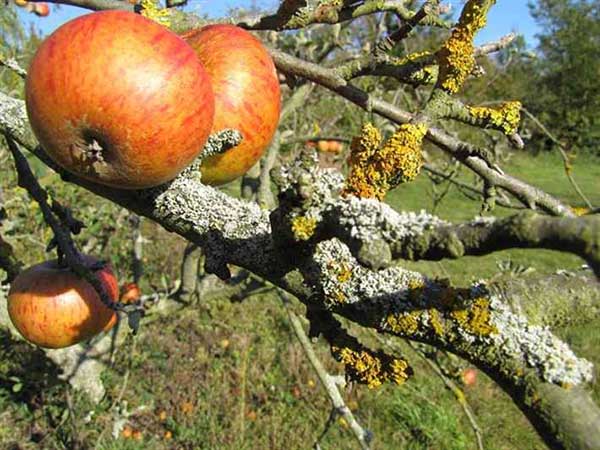
Content
What are mosses and lichens, reasonstheir appearance in the trees, is it necessary to fight with them
So, are mosses and lichens a boon or harm?
Or maybe this is an absolutely normal neutral phenomenon that you shouldn't even pay attention to?
The opinions of experts vary.
First, let's figure out what mosses and lichens are, what are the conditions (reasons) for their appearance.
Moss is a spore green plant.
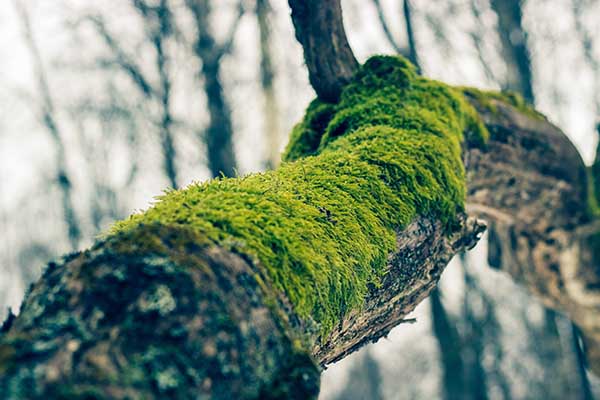
Lichen is a symbiosis between algae and fungi.
As a rule, mosses and lichens form in the most thickened (shaded) parts of the crown, where moisture is more retained after rain, because the crown is poorly ventilated and illuminated.
In this way, dampness (high humidity), poor airflow and illumination (due to the lack of regular pruning or initially incorrectly chosen = shady place) - this is the most favorable environment for their appearance.
Most often they appear on old and diseased trees, in which the growth and restoration of the bark slows down = the bark is already dead.
Simply put, the appearance of mosses and lichens on the bark is a consequence of tree disease or improper care of it, and not the cause.
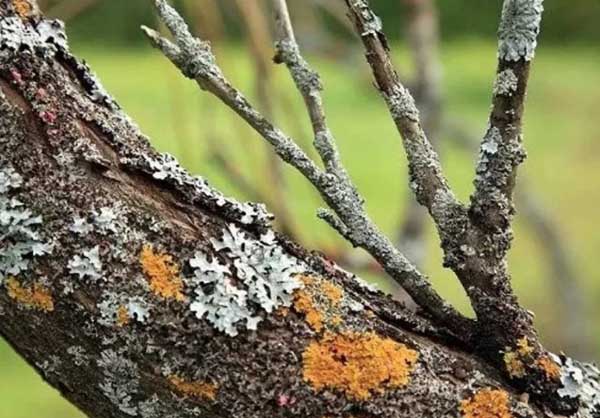
Interesting! As a rule, gardeners are faced with lichens, and not mosses.
Mosses can usually be seen on tree trunks in the forest (north side).
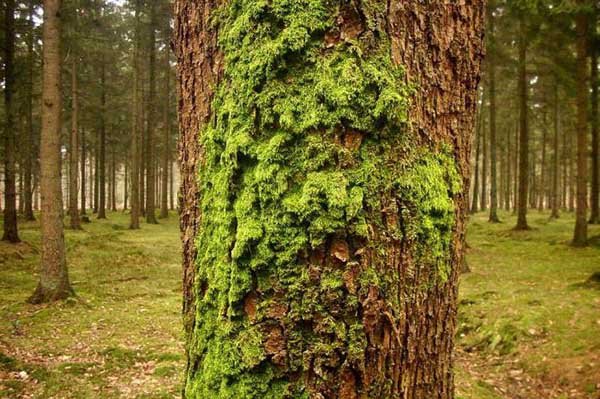
Most often it is believed that mosses and lichens do nothing wrong by themselves and do not harm the tree in any way. They do not destroy wood, because live on the bark and deep into do not penetrate. This is certainly not a disease.
Moreover, it is believed that mosses and lichens protect trees from sunburn and frost damage.
In addition, their appearance testifies to the cleanliness of the air, so to speak, a good ecological situation (it is not for nothing that you rarely find them in an urban environment, but only in summer cottages, especially near forests).
Thus, this is a purely aesthetic problem that does not cause any harm to the tree. On the other hand, mosses and lichens can even make the tree more decorative.
Opinion: “You don't need to do anything with them! This is a fight against windmills. "
Of course, there is also the opposite opinion.
The bottom line is that mosses and lichens can be sources of accumulation of various infections, because in these places, favorable conditions are created (a humid environment after rains) for the development of bacteria and fungi, and insect pests can also hibernate in them.
Accordingly, you need to regularly clean the bark of trees from mosses and lichens.
Opinion: "I do not believe lichens do not harm trees. In my garden I see branches die underneath» .
However, as a rule, at first (for some reason) the branch weakens and dies, and only then mosses and lichens appear on it (consequence).
However, lichens can only negatively affect young treespreventing the breathing of the bark.
When is the best time to clean or process trees from moss and lichens
It is convenient to clean trees from mosses and lichens when on trees still or no leaves, i.e.:
- in early spring, when the trees are still bare, they have not yet swollen buds, or they are in the "green cone" stage (usually in March-early April).
- and / or in late autumn, when the last harvest is harvested (in October), and it is possible both before and after leaf fall.
Interesting! Treatment of trees from mosses and lichens, as a rule, is combined with early spring eradicating garden treatment and / or autumn spraying against diseases and pests.
How to get rid of mosses and lichens on trees: ways
If you nevertheless decide to deal with mosses and lichens, then you need to do it right.
By the way! If moss begins to grow on the ground, then this is a clear signal that the soil is very acidic and it is required liming (deoxidation).
Mechanical
Mosses and lichens lend themselves well to cleaning with hand tools:
- Choose a damp (wet) and calm day. Moreover, it is desirable that the other day there was rain: when the moss is wet, it is very easy to clean.
- Spread a film under the tree so that mosses and lichens fall on it.
- Take a wooden scraper (spatula).
Important! But never a metal brushthat you just harm whole bark.
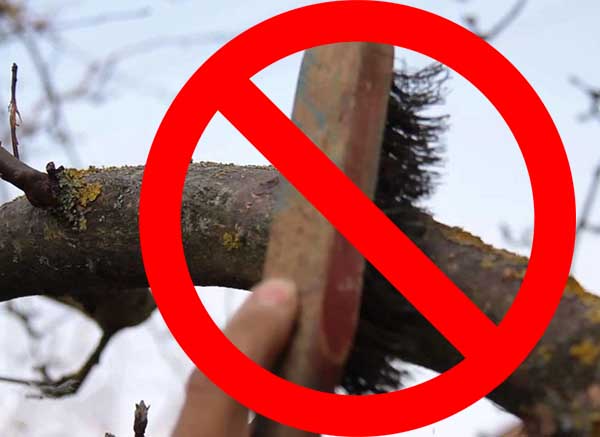
- Gently without damaging the bark, cleanse it of mosses and lichens.
Advice! In wet weather, you can very easily clean off all the mosses and lichens with just your hands in tight (hard) gloves, without any damage to the bark.
- Collect all the mosses and lichens that have fallen on the film and take them out of the site, or rather burn them.
- Further, to fix the effect, you can additionally spray the tree with a solution ferrous sulfate.
- Advice: or even better, do not clean anything, but simply spray it with iron vitriol, and everything will disappear by itself.
Note! Mechanically killing mosses and lichens can do more harm than good. The fact is that in the process of cleaning the trunks, you can damage the bark, which ultimately becomes the gateway for infection. Accordingly, it is better not to scratch the bark once again, but to process (spray) with special means, if you have already decided to get rid of mosses and lichens.
Karcher (pressure washer)
In general, if you do not want to engage in manual labor, then you can use a special device for washing cars - a high pressure washer, which is more often called "karcher". Only very carefully (not at the highest power, after all, a tree is not a car for you), otherwise you can wash off the bark from young branches.
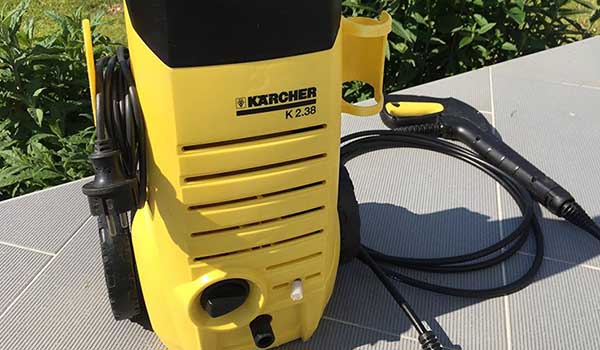
Opinion: "Karcher cleans perfectly. In the fall, I walked through my trees with a körcher and beat off all the moss and lichens. For large volumes, it's better not to think of«.
Chemical methods
It is much more effective than cleaning the bark of trees by hand, applying solutions of special preparations to the area of distribution of mosses and lichens, while you are also guaranteed not to damage the bark.
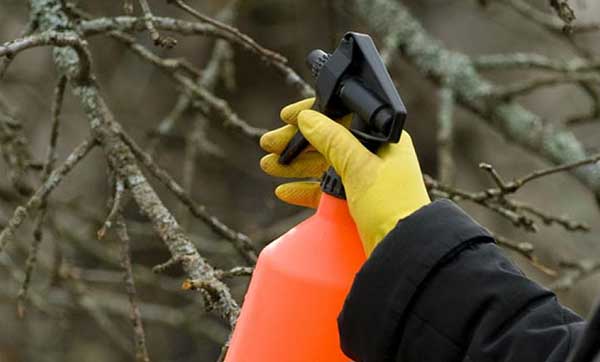
After processing, mosses and lichens will turn black after a while (the moss turns black immediately, but there are no lichens), dry up and fall away without your help, or rather, they will peel off and simply fly off the tree (for example, they will be blown away by the wind).
As for the funds, then, as a rule, it is used against mosses and lichens. inkstone (3% solution for stone fruits and 5% for seed crops - apples and pears).
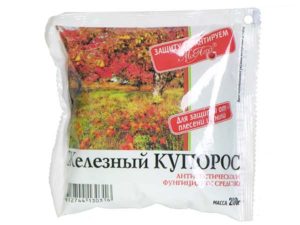
Also, many advise using 3% solution copper sulfate (and correspondingly - bordeaux liquid) or 5-7% solution urea (carbamide).
But, as practice shows, they are noticeably less effective than ferrous sulfate.
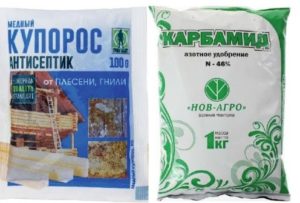
Advice! In general, you do not even need to specially treat trees with these means: it will be enough to carry out early spring eradication of the garden (copper sulfate + urea or Bordeaux mixture) and / or autumn eradication spraying (more often it is iron vitriol).
Video: the best remedies for mosses and lichens on trees
By the way! A similar effect will give regular whitewashing tree trunks in autumn mixtures based on copper sulfate and lime. Moreover, you can whitewash directly on mosses and lichens (they will no longer be in the spring).
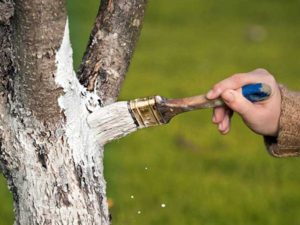
We hope that the information for thought has been received. And you personally need to decide whether or not to fight against mosses and lichens. If you still decide to get rid of them, then now you know how to do it most correctly so as not to harm the tree.
Opinions: "I love lichens! My cherries are all completely covered with different lichens, which does not prevent them from bearing fruit perfectly. Fighting them is completely useless in our dampness ".
«I love mosses on the ground and lichens on my old trees and fences! They are so beautiful and magical even! To me, on the contrary, they seem to be a super decorative decoration of tree trunks.«.
Video: how to get rid of mosses and lichens on trees


Hope, hello! I read your article about tag-loving plants. Great, thank you. We are trying to somehow embellish the area near the entrance in Moscow. Whatever I brought from the dacha, nothing takes root. Only the hosta took root, but in the country it is colorful and bright
And at the entrance she was a little alive, pale, and became a hole. Apparently it's not just the light. The soil is bad. Only ferns and lilies of the valley grows. And so you want beauty. Any advice?
Good day, Svetlana!
If the soil is really bad (most likely, very clayey and heavy, constantly "wet", huh ???), then you will not advise anything else how to bring loose fertile land from the dacha.
BTW! Do you have moss growing right on the soil?